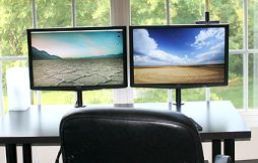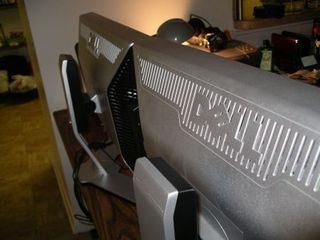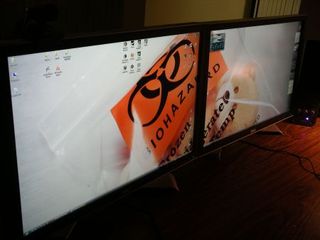Tips For The Multi-Display Life
Thinking about adding a second monitor to your desk? Here are reasons to take the plunge, and options to consider while shopping and setting it up.

A Tale Of Two Monitors

At homes and in offices, we’ve started to notice more than one display per desk. Ask the users of these multi-monitor desks whether they’d be willing to return to a single monitor system, and they’ll likely tell you they’ll give up the second display when you pry it from their cold, dead hands. So, what’s the appeal? Do multiple displays really make computer users more productive? If so, are three monitors better than two? Is there such a thing as too many displays, or too big of a display? Those are the questions we aim to answer in this article. Whether you already have a second monitor or you’re considering picking one up to add to your workspace, there are a couple of things you should consider to get the most out of your multi-display setup. First, make sure to pick the right size and the right type of monitor for the work that you do. Second--make sure to use the right software to get the full benefit of having multiple displays connected to your computer. We’ll help you determine both.

Why are size, type, and software so important? For example, if you’re a PC gamer, you should have different priorities when buying a second monitor than a software developer or a Web designer. Similarly, a movie buff looking for a big display to replace the TV will be looking for something different than a PC gamer. Alternatively, if you’re a laptop or netbook user, you may want a different kind of display than a desktop user, who might be looking to match the experience he gets on each monitor.
Over the course of this tutorial, we’ll dive into those scenarios, and other considerations, such as making sure to take your workspace into account when shopping for a display. Also, we’ll look at some popular multi-monitor configurations and displays, as well as some software options that will help you get the most out of your multi-monitor workstation.
Sign up now to get the best Black Friday deals!
Discover the hottest deals, best product picks and the latest tech news from our experts at Tom’s Guide.
Current page: Tips For The Multi-Display Life
Next Page Multiple Displays and Productivity